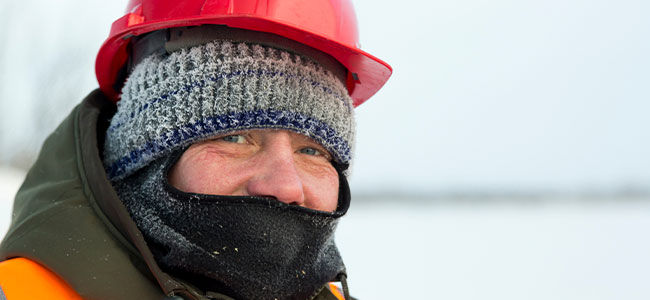
Training Employees to Handle Extreme Cold
Preparing employees for extremely cold conditions is essential for their health, safety, productivity and morale, requiring companies to invest in comprehensive training to mitigate health hazards.
- By Jane Marsh
- Feb 08, 2024
Preparing employees for extremely cold conditions is crucial for businesses operating in such environments. This preparation safeguards the health and safety of the workforce and enhances productivity and morale. When staff can handle the frigid temperatures, they can perform their duties efficiently without worrying about health risks.
Moreover, working in extreme colds exposes workers to various health hazards. Companies must prioritize and invest in comprehensive training for their teams to navigate and work safely in such challenging conditions.
The Risks of Extreme Cold
Hypothermia happens when an individual loses warmth faster than it can produce it, causing a hazardous drop in body temperature. Humans average around 98.6 degrees Fahrenheit, but with hypothermia, it can fall below 95 degrees. This drop can lead to confusion, drowsiness and loss of coordination, posing significant risks in a work environment.
Frostbite is another concern, which is when skin and other tissues freeze due to prolonged exposure to cold. The most commonly affected areas are the fingers, toes, ears and nose. Severe frostbite can lead to permanent damage or amputation.
The situation becomes critical and potentially fatal when the body falls to between 85 degrees and 78 degrees F. At these temperatures, major organs start to fail.
These health issues can drastically impact productivity and safety in the workplace. Employees suffering from cold-related illnesses cannot concentrate, make decisions or perform physical tasks effectively. It can lead to a higher rate of accidents and injuries, affecting the individual and putting others at risk.
Developing a Comprehensive Cold Weather Policy
Creating an effective policy for freezing conditions ensures safety and compliance. Here is a guide to the essential components:
- Dress codes. Clearly define the required clothing and protective gear for cold weather. It should include specifications for insulated, water-resistant clothing, proper footwear, gloves, hats and face protection.
- Work schedules. Adjust work schedules to minimize exposure to the cold. Consider shorter shifts, frequent breaks in warm areas and flexible scheduling during extreme weather.
- Emergency procedures. Develop comprehensive emergency response procedures, including steps to recognize and treat cold-related illnesses, emergency contact information and protocols for evacuating workers.